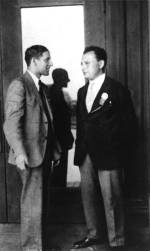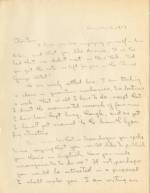|
Much of Pauling’s research in the late 1920s focused on using X-ray crystallography
to determine the molecular structures of a variety of crystals. But as always, his
mind ranged over several problems at once.
Before leaving Europe, Pauling had made arrangements with a young Dutch physicist,
Samuel Goudsmit, to translate and help expand Goudsmit’s doctoral thesis into a book on spectroscopy.
They completed the book by correspondence, with Goudsmit writing some chapters; Pauling
and others handling the final editing. It was published in 1930 as The Structure of Line Spectra, Pauling’s first book but one that already carried the stamp of his unquenchable
self-confidence: At least one reviewer complained that the authors’ assured tone gave
the impression that there was little more to be learned about line spectroscopy. Other
reviews were positive, and the book became a moderate success.
Notably, it was also a work of almost pure physics. It was a harkening back to Pauling’s
flirtation with physics as his career path. But within a few months of returning to
Caltech, Pauling wrote a colleague, "I am sure that I shan’t be led astray by the
will-o’-the-wisp of theoretical physics." He had decided that chemistry would be his
field — a new type of chemistry transformed by and based upon the new physics. A chemistry
that would start from a new understanding of the chemical bond.
|
|
Click images to enlarge

Samuel Goudsmit and Wolfgang Pauli at a Caltech physics meeting, 1931.

Letter from Linus Pauling to Samuel Goudsmit. November 16, 1927.
"Goudsmit and I were never together, I think, during the period when [The Structure of Line Spectra] was written. He would write a draft of some material that he thought ought to go
in the book and then using that as a basis I wrote the corresponding sections of the
book."
|

